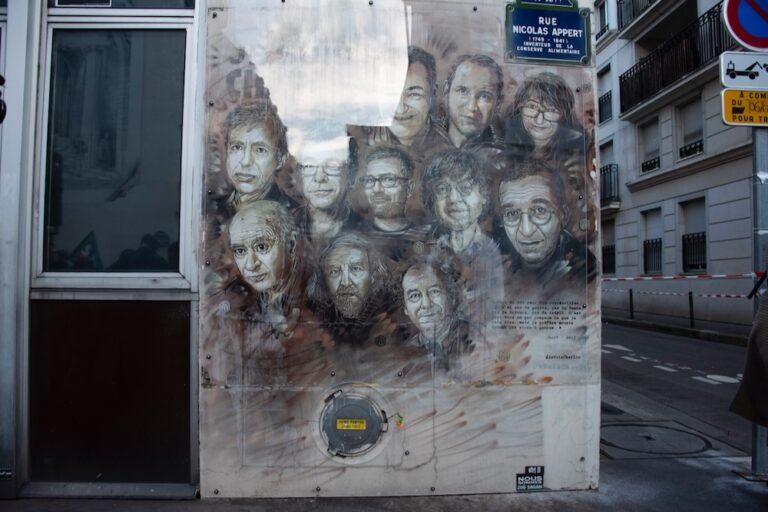Until it reaches the reader’s hands, a newspaper is vulnerable. A new report by RSF shows how governments, state institutions, powerful oligarchs and corporations obstruct print media distribution for their own ends.
This statement was originally published from rsf.org on 20 September 2019.
As print media publishers and distributors from all over the world gather today in Berlin for the annual Distripress congress, Reporters Without Borders (RSF) is releasing its latest report, entitled “Newspapers that never arrive,” which sheds light on how governments, state institutions, powerful oligarchs and corporations obstruct print media distribution.
Instead of silencing journalists or preventing them from writing a story, press freedom’s predators may block information at the moment of distribution. Until it reaches the reader’s hands, a newspaper is vulnerable and the predatory imagination knows no bounds. This is highlighted by the report published by RSF today, “Newspapers that never arrive – obstructing print media distribution,” which documents the many obstacles that may be placed in distribution’s often dangerous path.
“They are rarely quoted or named in a newspaper and they’re in the media vision’s blind spot, but the printers, distributors and vendors of newspapers are essential links in the press freedom chain,” RSF secretary-general Christophe Deloire said. “It’s not enough for journalists to be free to investigate and write. The product of their work must be able to reach the reader without hindrance. Or else the public is denied the news and information diversity that is essential to any democracy. Hence the need and urgency to lift the veil on practices that threaten our fundamental right to be informed.”
According to an RSF survey of more than 90 countries, nearly 41% of distribution breaches occur at the moment of sale. As the final intermediary between the newspaper and its reader, the newspaper vendor may also be the target of the last attempt to restrict the flow of information. The methods deployed may be spectacular. In Congo-Brazzaville and Equatorial Guinea, newsstand managers have seen police seize entire newspaper issues in order to burn them.
The obstruction may be carried out more discreetly as in Madagascar where, in the early hours of the morning, government representatives bought up an entire issue exposing a secret liaison between the First Lady and one of the president’s advisers. It is often more insidious, as in Poland, where news vendors are obliged to promote only the pro-government press to the detriment of independent print media, which may end up going bust because they are not displayed and therefore not bought. Finally, censorship may be exercised in a radical and brutal manner as in Mexico, where “voceadores” – newspaper vendors who roam the streets shouting the headlines – are liable to be threatened or even gunned down by readers who don’t like the content of their newspapers.
Transportation throughout the country is another crucial phase in the print media distribution chain, one that offers an additional opportunity to restrict the circulation of independent and opposition media. According to RSF’s survey, more than 22% of distribution violations occur while newspapers are being transported from the presses to the point of sale. In Nigeria and Indian-administered Kashmir or Pakistan, the authorities don’t shrink from ordering the police or army to intercept newspaper distribution trucks and seize their cargoes.
The longer the route to the point of sale, the greater the opportunities for obstruction. Borders may become impassable barriers for some publications if governments so decide. Sometimes it is on religious grounds, as with the French satirical weekly Charlie Hebdo, which was banned in many Muslim countries in 2015. On other occasions it is on purely political grounds, as the French newsweekly Jeune Afrique found in Algeria, where its importation has been blocked in recent months. Financial measures may also prove to be powerful censorship tools, as in Kosovo, where an increase in import duty sufficed to eliminate the Serbian-language print media, and in Russia, where print media postal subscriptions have plummeted because the state stopped subsidizing the postage.
The printing stage may also prove to be a fateful point in the production process. For some opposition newspapers, censorship occurs just before they are printed. This is the case in Egypt, where a state-linked printing company may refuse to print an entire newspaper issue unless a certain story that will upset the government is withdrawn. And in Gabon, the entire content of newspaper issues have been replaced by bogus content just as they are being printed, without the publisher knowing. And when it is too late to change content before printing, it is easy to confiscate entire issues as they come off the presses when an oligarch or an intelligence agency is all powerful, as in Bulgaria or Sudan.
More insidiously, the monopolies or the control that governments or powerful media groups may exercise over printing and distribution also enable them to control the print media by giving them the de facto power to impose laws or prices. They may even decide, as in Venezuela and Nicaragua, which print media are allowed access to what is an essential input – newsprint. In the end, regardless of the ways and means, interfering in distribution usually has the same goal – to prevent a newspaper from being read.



